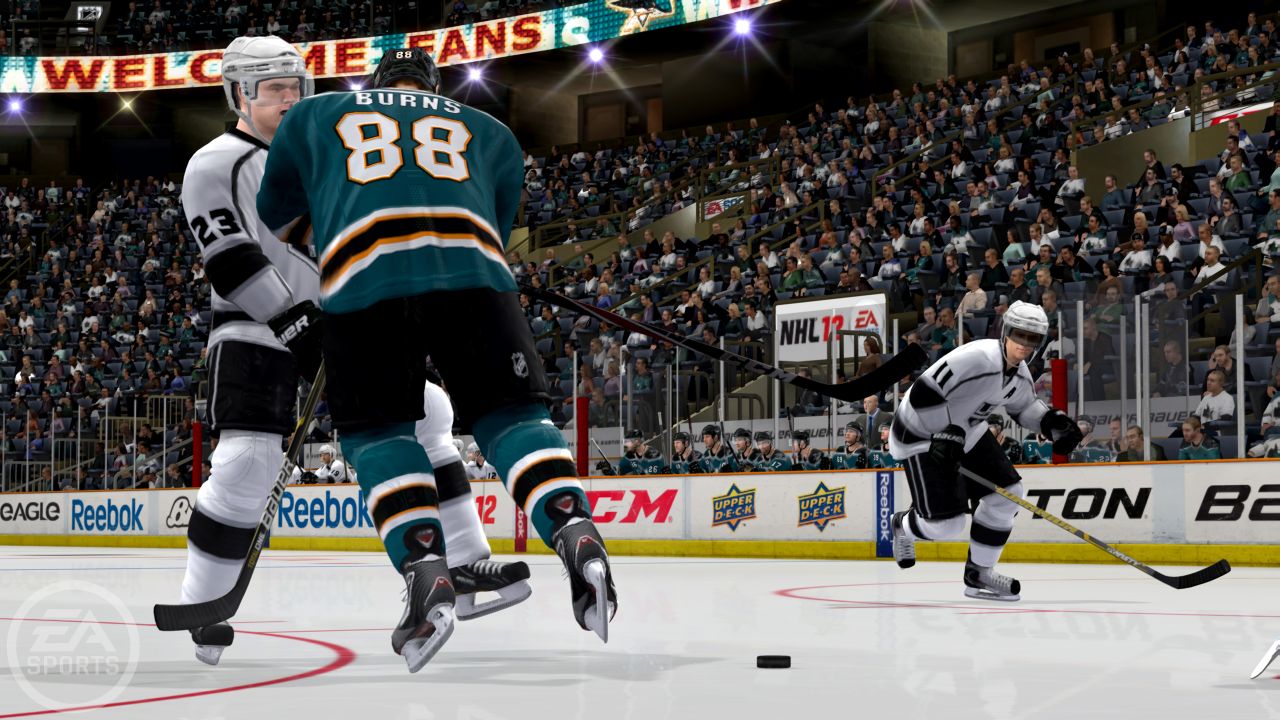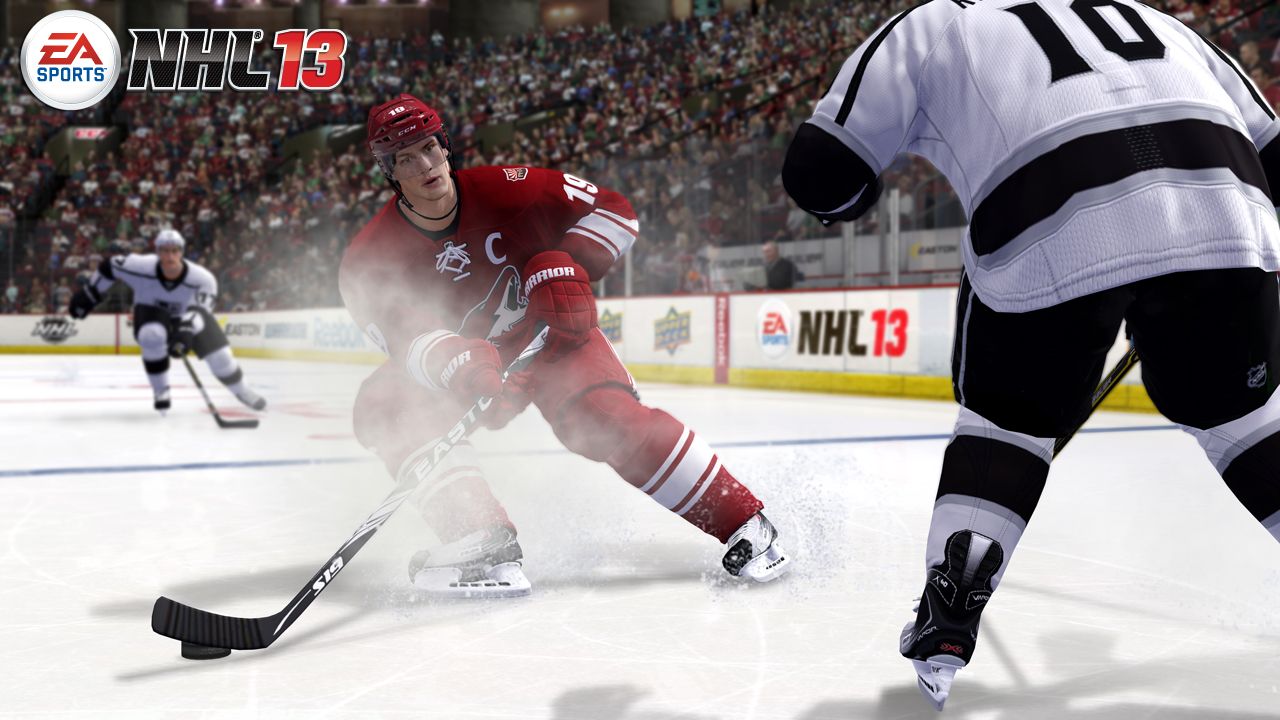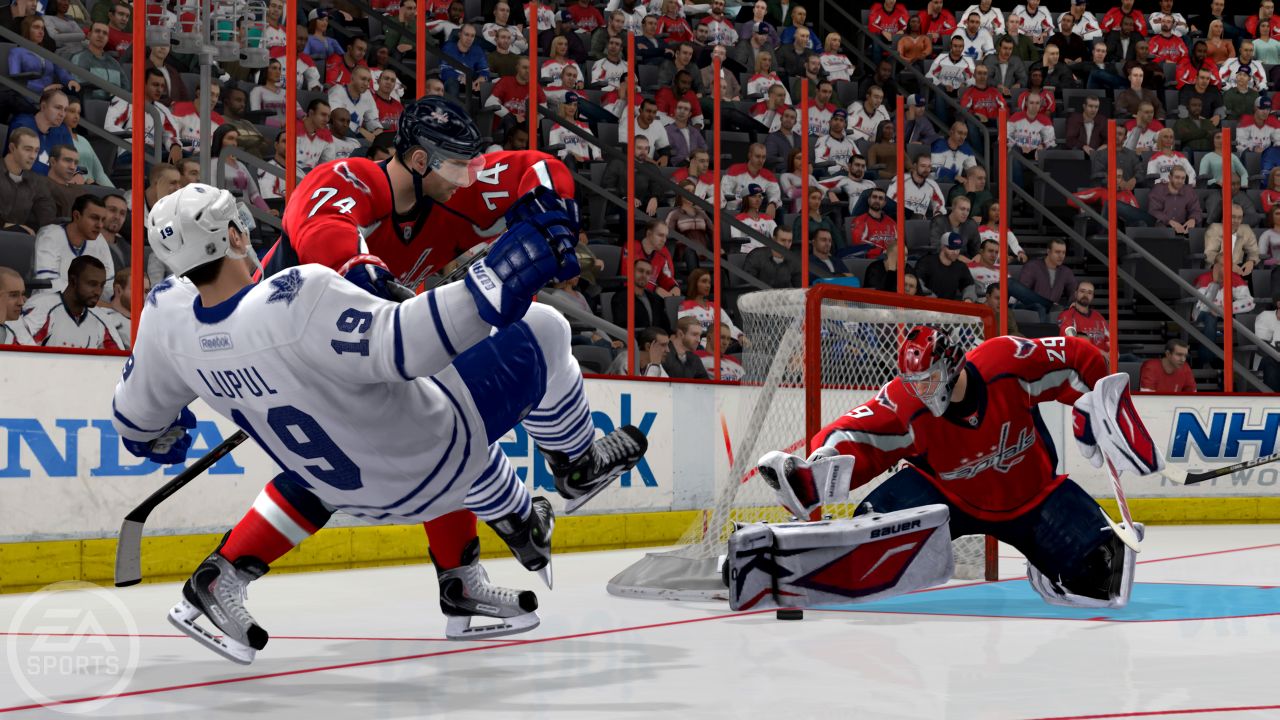NHL 13 Preview – E3 2012
Posted by
SpectralShock
on
The NHL franchise has been enjoying some easy success over the past few years. What started out as a race against the 2K counterpart has become a one-game show for the ice hockey sim. With NHL 13, the developers at EA Sports aren’t letting up, announcing a wealth of new features that are said to be game changers much like the skill stick and new physics engine in the years past. We had a chance to play a full match and talk a bit with the developers at this year’s E3.

As mentioned, the big new addition this year is called True Performance Skating. Essentially, this means players now have real-world attributes which they can display in the game, and it’s all tied into the skating system. Explosiveness refers to how quickly a player can accelerate from a stationary state, top-end speed is fairly self-explanatory, and momentum means players can no longer make sharp turns without losing speed. These three points of the system promise to change the way that fans have been playing NHL until now.
Next on the list is so-called Hockey IQ, which essentially encompasses various AI improvements during play. Skaters should now be smarter, thinking a play ahead and not squarely focusing on the puck – and taking every opportunity to prevent scoring chances. Goaltenders benefit as well, and are now able to see potential danger and not just stare at the puck, allowing them to “cheat” into the direction they think the pass is going to go. The teams as a whole will benefit as well, with more strategies to choose from.

We got to see all of these new gameplay mechanics in action, running live on an early build of the game. The explosiveness factor now creates separation between the players, giving attackers a much needed boost when getting by the D, but also allowing fast D-men to catch up to any forward – something unseen in NHL 12, where all players pretty much skated the same. With top-end speed, players are able to finally show off their respective attributes and beat opponents in an all-out chase for the puck. However, when at top speed, players will not have full control over their body or the puck, so shooting and passing accuracy will be impacted. And if you want to turn – that’s where momentum comes into play. Players can no longer stop at any time and turn at 90 degree angles when at full speed – instead, physics will throw you for a lengthy loop around the ice.
As well, we had a chance to play a full demo match during the show. Things started off well, and it’s easy to see the very notable impact of the new skating engine. Pulling off moves in the attacking zone now requires you to slow down, and you can no longer cut in front of the net while wheeling with a speedy player. Also, while turning at full speed, a controller vibration function has been added, bringing a huge sense of immersion.

Beating players with explosiveness is a bit tough to showcase in a regular game with all players on the ice, but top end speed certainly helped get a few opportunities – and missed shots, because we didn’t slow down before making a play. For goalies we saw improvements, but they twitched away from the skater with the puck almost on every odd-player rush against them, making us question the potential over-use of the new AI logic.
Perhaps most importantly, now intimately knowing your players will be more important than ever. Depending who is on the ice will affect your strategy – can you push this defender deep if he has enough speed to recover, or is a slower D-man currently on the ice and you should place is safe from the blue line? Similarly, should you try for breakaway passes if you have a fast attacker, or wait for the next shift coming on? These are the kinds of questions that truly matter, and are the real game-changers for the series thanks to the skating engine.

There is more news to come in the future, including details of GM Connected, NHL Moments Live, HUT, and EASHL (which is said to be incorporated into GM Connected). But for now, the feel of the game is already starting to take shape, and though things were a bit rough around the presentation and some odd physics – this was an early showing of the title. And though the overall promotion so far puts the series in a weird place, pretty much conceding that major innovations only take place during the odd years, leaving the even releases (NHL 08, 10, 12) without much to do, there’s more than enough reasons to look forward to NHL 13. The hockey sim is scheduled for release this September.
